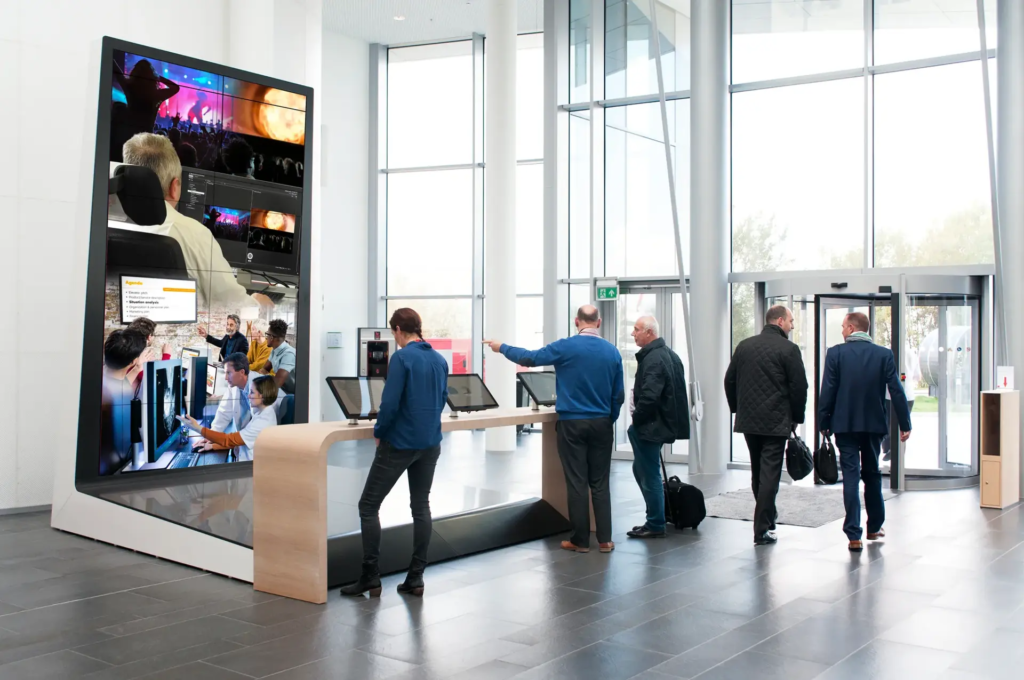The world of audio visual solutions is evolving fast. As we step into 2025, businesses are looking for smarter ways to connect, communicate, and present their ideas. From corporate boardrooms to retail stores and educational institutions, AV technology is becoming a key player in improving user experience and productivity.
In this blog, we’ll explore the top AV trends for 2025 and how they’re shaping the way we work, learn, and interact with the world.
Smarter and More Connected AV Systems
In 2025, audio visual systems are expected to become more intelligent and connected than ever. Many AV devices are now being integrated with Internet of Things (IoT) technology. This means they can connect with other smart systems in a building – like lighting, air conditioning, or security – to provide a smooth and automated experience.
For example, when a meeting starts, the lights can dim, the projector can turn on, and the video conferencing system can begin without needing any manual input. These smart integrations save time and help make meetings and presentations more efficient.
Rise of Hybrid Work And Virtual Collaboration
The shift towards hybrid work is still growing in 2025. More companies are focusing on virtual collaboration tools and platforms to connect their teams from different locations. Audio visual solutions are at the heart of this change, helping teams stay productive even when working remotely.
New video conferencing systems now offer features like AI-powered camera tracking, noise cancellation, and real-time language translation. These tools make remote meetings feel more natural and inclusive. Interactive displays and digital whiteboards are also becoming standard in modern workplaces, enabling smooth team collaboration.
Also Read: Top 5 Premium Display Solutions for Corporate Environments in 2025
Digital Signage Solutions Getting Smarter
Digital signage solutions are seeing major upgrades. In 2025, they’re not just screens displaying content – they’re interactive, data-driven tools that can change messages based on audience behavior or time of day.
Retailers, for example, are using digital signs to show personalized ads to customers as they walk by. Restaurants are updating their menus in real-time. These advanced digital displays use sensors, AI, and real-time data to improve customer engagement and make better use of marketing budgets.
Focus on Sustainability and Energy Efficiency
Sustainability is more than just a trend – it’s becoming a requirement. AV manufacturers are now focusing on creating energy-efficient products that last longer and produce less waste. LED displays with low power consumption, eco-friendly materials, and energy-saving modes are becoming more common in AV equipment.
Additionally, businesses are opting for cloud-based AV systems that reduce the need for large on-site hardware. This not only cuts energy use but also allows for easier updates and maintenance.
The Role of Artificial Intelligence In AV

AI is playing a bigger role in AV in 2025. It’s being used to improve the performance and reliability of audio visual systems. For example, AI can detect when a microphone isn’t working properly or adjust speaker volume based on how many people are in a room.
Voice-activated systems are also becoming more popular, allowing users to control AV equipment using simple voice commands. This makes the systems more accessible and easier to use, especially in busy environments like classrooms or conference halls.
How Digital Transformation Is Impacting AV Solutions
How digital transformation is impacting AV solutions is a question many companies are asking. As businesses go digital, AV technology is becoming a central part of this transformation. Cloud integration, remote management, mobile control apps, and real-time data sharing are now standard in AV systems.
This means businesses can control their AV setups from anywhere, analyze performance data, and quickly adapt to changing needs. Digital transformation is pushing AV companies to create more flexible and user-friendly systems that support growth and innovation.
Trends in Education And Training
In schools and universities, AV technology is changing how teachers deliver lessons. Smartboards, projectors, and wireless presentation tools are making learning more interactive. In 2025, expect to see more use of augmented reality (AR) and virtual reality (VR) in classrooms, offering students hands-on learning experiences that were once impossible.
Similarly, in corporate training, companies are using immersive AV tools to create realistic simulations for employees. This helps improve engagement, understanding, and information retention.
Conclusion
As we move through 2025, it’s clear that audio visual solutions are becoming more intelligent, sustainable, and user-friendly. Whether it’s through smart digital signage, AI-powered conferencing tools, or interactive learning systems, AV technology is helping people communicate better in every industry.
At High Level Information Technology, we stay ahead of the curve to bring the latest AV trends and solutions to our clients. To explore how your business can benefit, visit our audio visual solutions page for more details.
Suggested URL: What is Smart Home? 10 Ways to Make Your House a Smart Home

